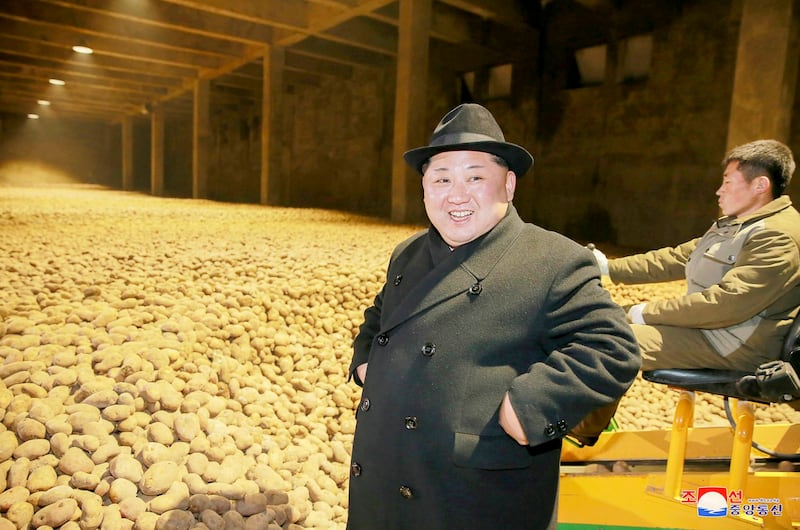It’s April, hunger crunch time in North Korea.
The potato fields are filled with adults and children desperately hacking at the earth with hoes and wearing makeshift backpacks.
But these are not farm workers – the potato harvest ended in March. They are scavengers looking for potatoes missed by the harvesters or discarded due to spoilage.
The scene at the fields in the northern province of Ryanggang is indicative of the starvation the country experiences this time of the year, as food from the year-end government rations run out, and the next scheduled rations have not yet come in, said a resident connected to the agricultural sector in the province’s Unhung county, who like all the sources in this report insisted on anonymity for safety reasons.
“After last year’s fall harvest, Ryanggang province gave 200 kilograms (440 pounds) of potatoes per farmer and 100 kilograms (220 pounds) of potatoes per dependent,” he said. “Rice and corn were promised as part of the second distribution, but they have not yet been supplied.”

In North Korea, citizens are periodically given rations by the government, but it's not enough to live on and they must also purchase additional food from markets, or find it elsewhere.
Last year, the country had a better harvest than in previous years, but people are still short of food.
The country’s farms produced about 4.82 million tons according to the Rural Development Administration of South Korea. That’s higher than most years, it is still well short of the 5.76 million tons of North Korea’s annual food needs estimated by the Food and Agriculture Organization of the United Nations.
So the annual starvation period occurred right on schedule, and just like in previous years, potato scavengers flocked to the fields to try to find discarded or unharvested edibles, another Ryanggang resident said.
“Frozen potatoes can be dried and powdered to make noodles or potato cakes,” he said. “These days, farmers in the rural areas of Ryanggang Province are unable to go to work because they have nothing to eat.”

The situation is dire. The government tries to cover up starvation deaths by saying that people are dying of disease, he said.
“Clinics and neighborhood-watch units say that they died from disease, but in fact, everyone who died from disease these days actually starved to death because they had nothing to eat.”
Starvation deaths in North Korea are typically higher around March, Jiro Ishimaru, the CEO of Japan-based outlet Asia Press, which focuses on news from North Korea, told RFA.
“The fear is rapidly spreading among North Korean residents, especially among the vulnerable class, that if things continue like this, people will die like last year,” he said.
Ishimaru said that although production increased last year on farms in the northern provinces, there was no significant difference in distribution to farmers. Grains were allocated first for military rice and supplies, so the amount of grain remaining for the residents was small.
In other areas of the country, the government is providing advance food supplies to the people because they cannot plant rice if they are too weak from starvation. The balance will be taken out of their rations usually given at the end of the year, a resident of South Pyongan province, north of the capital Pyongyang, told RFA.
“The corn distributed to each starving household was the amount for two months,” he said. “There is no interest, so farmers welcome this policy.”
To generate enough food supplies for the farm workers, the authorities instructed neighborhood watch units, district offices and factories to collect rice and corn so they can take care of “those in need.”
Translated by Claire S. Lee. Edited by Eugene Whong and Malcolm Foster.
